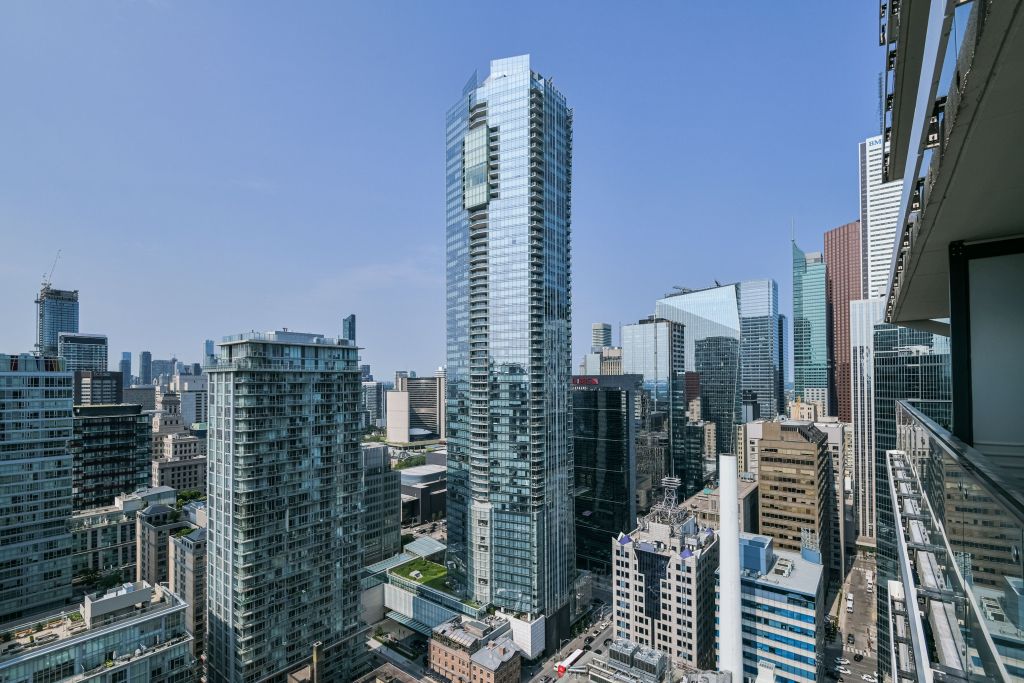
When most people picture a townhouse, they imagine a row of homes neatly connected by shared walls — but in Toronto, that’s only half the story. What really defines a townhouse isn’t its look, but how you own it. From full land ownership to shared maintenance agreements, understanding the difference between freehold, condo, and POTL townhouses can save you surprises (and thousands of dollars) down the line.
Let’s break down the three main types you’ll find across Toronto — and help you decide which one fits your lifestyle best.
Freehold Townhouses: Complete Ownership, Maximum Control

A freehold townhouse is the closest thing you’ll find to owning a detached home in a connected row. You own both the building and the land it sits on — from the basement floor to the patch of grass out front.
With no condo board or management company, there are no monthly maintenance fees. But that independence comes with full responsibility. You’ll handle the roof repairs, lawn care, snow shovelling, and any exterior upkeep yourself. For some, that’s freedom. For others, it’s a to-do list that never ends.
Freehold townhomes are often found in mid-density pockets like Queen West, and older pockets of the city, where lots are deep enough to support row-style development. They’re also becoming more common in outer neighbourhoods of Scarborough and Etobicoke where builders can offer fee-free ownership.
Pros:
- Full control over your home and land
- No monthly maintenance or condo fees
- Greater long-term appreciation tied to land value
Cons:
- All exterior and structural maintenance is on you
- Costs can add up for major repairs (roof, driveway, etc.)
Thinking about selling your freehold townhouse? Learn how to sell higher with Toronto Livings.
For a deeper comparison of ownership styles, check out GTA West Living’s guide on Freehold vs Condo Townhouses.
Condo Townhouses: Shared Spaces, Simplified Upkeep

A condo townhouse blends home-like living with the convenience of shared maintenance. You own the interior of your unit, but the exterior, land, and shared amenities belong to a condominium corporation. That means you’ll pay monthly condo fees, which typically cover landscaping, snow removal, roof repair, insurance on the exterior, and sometimes even utilities.
In exchange, you’ll have fewer weekend chores — but a bit less autonomy. The condo board oversees what you can and can’t do with your home’s exterior. Want to change your front door or install a satellite dish? You might need board approval first.
These townhouses are common in Liberty Village, East Bayfront, and along major transit corridors where land is scarce and vertical living makes sense. For many, they strike the right balance between ownership and ease.
Pros:
- Lower individual maintenance responsibilities
- Shared upkeep through predictable monthly fees
- Often include amenities or shared green space
Cons:
- Monthly condo fees can rise over time
- Limited control over exterior appearance and common areas
For an official definition, visit the Condo Authority of Ontario’s explainer on condominium ownership.
If you’re exploring condo living in Toronto, visit our Buy Better guide for expert insights.
POTL Townhouses: The Best of Both Worlds

A POTL townhouse — short for Parcel of Tied Land — sits somewhere between a freehold and a condo. You own your home and the land beneath it, but it’s “tied” to a Common Elements Condominium Corporation (CEC). That means you also own a share of certain shared spaces — think private laneways, visitor parking, or landscaped courtyards.
You’ll pay a monthly POTL fee for maintenance of those shared elements, but otherwise, you control your property much like a freehold owner. It’s a hybrid model that gives you autonomy with a touch of community upkeep.
POTL developments are increasingly common in suburban pockets of Vaughan, Brampton, and North York (Downsview Park is a big fav of ours), where builders include private roads and shared driveways. They offer the best of both worlds — independent living without the full burden of maintenance.
Pros:
- You own both the home and land
- Shared maintenance of common areas like roads and landscaping
- Typically lower fees than a full condo townhouse
Cons:
- Still subject to condo-style rules for shared spaces
- Legal structure can be complex — always review the status certificate
To better understand this hybrid form of ownership, read Merovitz Potechin LLP’s explanation of POTL and Common Elements Condos.
Want to hear us talk through these townhouse types in real time?
Tune into our latest Toronto Livings Podcast episode, where Mark and Joey break down the differences between freehold, condo, and POTL townhouses — with real examples from Toronto neighbourhoods.
🎙️ Listen to the episode here or find it on Spotify and Apple Podcasts.
Which Type Is Right for You?
When it comes to townhouses in Toronto, the right choice depends on how you want to live — and what you’re willing to manage.
| Type | Ownership | Fees | Control | Maintenance |
|---|---|---|---|---|
| Freehold | Home + Land | None | Full | 100% Yours |
| Condo | Interior + Shared Land | Monthly | Limited | Shared |
| POTL | Home + Land + Shared Elements | Small Monthly Fee | Moderate | Shared |
Before you buy, ask your agent (hi 👋) to check the property’s title and status certificate — it’s the best way to confirm what you’re actually buying. Whether you want full control, minimal upkeep, or a balanced middle ground, there’s a townhouse type that fits your lifestyle.
Ready to explore what’s on the market? Start with our Buy Better guide or contact us below for personalized advice!


























